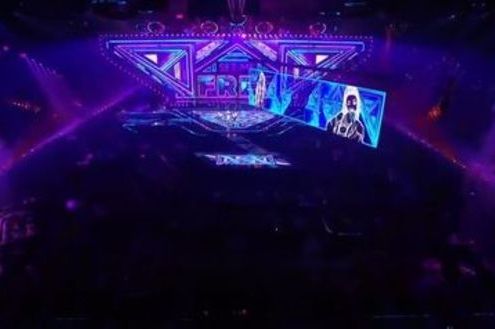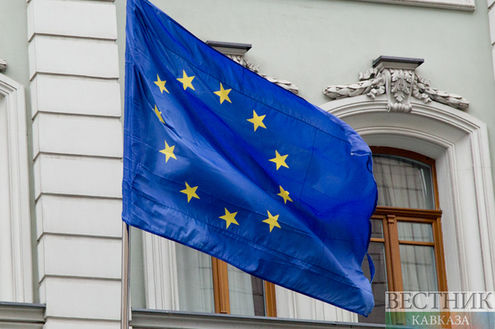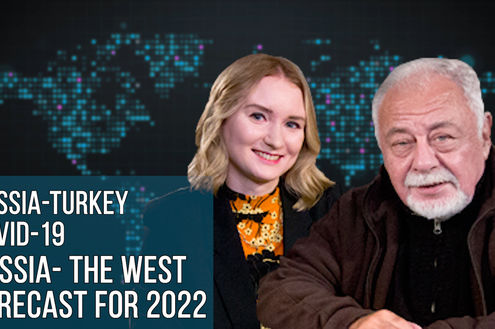Vestnik Kavkaza reported earlier that the conference ‘The South Caucasus: Between Confrontation and Cooperation’ was held in Berlin in December. It was dedicated to issues of cooperation and ethnic-territorial conflicts in the region, as well as to the political transformation of its countries. Armenia was represented by the political scientist Gayane Novikova, who headed the analytical center Spectrum. Novikova told the audience about various aspects of the relationship between the state and society in Armenia.
The case of Armenia is to some extent different from two other South Caucasus states owing to the fact that Armenia, being a member of two Russia-led political-military and economic organizations is developing relationships with the EU and NATO. Therefore, against the background of a growing number of problems, including national security, this state is trying to balance and to find ways of cooperating with Russia in the hard security and economy areas, and with the EU in soft security areas. In spite of its integration choice to join the Eurasian Economic Union, Armenia is attempting to convince the democratic world that it is ready to meet and is meeting European standards in respect to human rights, the rule of law, good governance, etc.
However Armenia's critical decision to join the Eurasian Union, which resulted in the abandonment of three-year negotiations with the EU on an Association Agreement, including the DCFTA, reduced its ability to implement a policy of complementarity. This decision resulted from several political-military and economic as well as social reasons, all of which render Armenia's national security vulnerable on a broader scale.
We can discuss the reasons later, however I would like to mention that the choice of the Russian integration model was supported by the majority of the Armenian population. The reaction of society to the sharp change in the Armenian foreign policy -- the abrupt U-turn toward Russia -- was rather calm: protests were held only by a small and marginal group.
Moreover, according to the Gallup International Association poll conducted in Armenia on Oct 10-21, 2015, among 1,105 respondents, 54.4% answered that unification with Russia would be a correct move. Only 11.1% answered that they wished for integration with the EU. 29.9% answered that Armenia does not need to unify with any country.
Actually, I am very skeptical regarding the results of any poll conducted in Armenia; however, it is obvious that a pro-Russian mood is quite strong throughout the society.
Summing up this part of my remarks, I am arguing that nevertheless the intention and all attempts to avoid extremes in the relationships with Russia and the EU are beneficial to both the Armenian state and Armenian society.
*****
Now let me turn to my main theme. The interaction between the state and society in Armenia is developing mainly on the basis of domestic processes; although not overwhelming on a daily basis, the visible influence of foreign policy issues allow the state to some extent to manipulate society.
Let me clarify: state is able to diminish the society's conflict potential by redirecting the citizens frustration and anger caused by domestic problems toward external problems and external actors. Until recently the state was quite successful in following this policy; however, the slowly emerging civic society in Armenia now requires more transparency from the ruling elite if it is to preserve its power.
It must be emphasized that both the state and the society are preoccupied with the economic and social problems. I would refer once again to the mentioned Gallup poll: Only 1.8% of the respondents assessed the economic situation in Armenia as good, 24.3% as average, and about 73% as bad and very bad (33.8% as bad, and 39.1% as very bad).
To introduce to you the examples of interaction between the state and society in Armenia, I would like to refer to three important events which took place in the last two years in my country.
In 2013 Armenia experienced a presidential election. There was a very high level of social protest immediately after the elections: a significant segment of society (about 38%) which voted against the incumbent president considered the results of the election unfair and fabricated. However, the oppositional parties and their candidates for presidency were unable to mobilize this protest movement owing to several factors. One result has become apparent: the consequent marginalization of many political parties has opened opportunities for new grassroots actors.
A further model of "state -- society" interaction was the "Electric Yerevan" movement in mid-June- beginning of July, 2015, which was caused by the decision of the state to increase the cost for electricity. The motto of the movement was "We are masters (owners) of our country!"
This widespread protest (in correlation to the Armenian scale of social mobilization) has been provoked by declining standards of living for the majority of the population and by various forms of social injustice. Analyzing events in the summer of 2015, I would argue that they:
- First, indicate an intensification of social, political, and economic polarization of Armenian society and a slow growth of civic protest activity under conditions of continuing and deepening economic and demographic crises.
- Second, there was clear evidence of the readiness of the state to use this protest movement as a mechanism to demonstrate to external actors and observers that the Armenian state is democratic and tolerant, and that it is ready to address and resolve the problems, acting together with the society and for the sake of the society.
- Third, the state manipulated the protest movement to address and resolve the urgent domestic economic problem, acting on the one hand as a "good Kaiser" and on the other hand exploiting the situation to put pressure on Russia, indeed even to threaten it with the ghost of a "colored revolution."
Hence, the "Electric Yerevan" movement which reached its peak after 4-6 days of occupation of one of the main streets in Yerevan, was split relatively easily into two parts: the more "pragmatic" and less radical group agreed with the plan suggested by the government, the more radical group of protesters -- the minority -- tried to bring to the table a demand for a change of power. This protest movement calmed down in a few weeks.
The consequence? The population is now paying indirectly for the increased cost of electricity, the Armenian ruling elite remains in power, and Armenia received a loan of 200 mln USD to buy modern weapons from Russia.
The "Electric Yerevan " short-lived protest movement shows:
- a strong will and ability by the state to avoid by all means the "color revolution" scenario;
- the prevailing pragmatism of the society. There are several factors contributing to this modus operandi, including close observation of the Ukraine experience, the intensification of confrontations along the border with Azerbaijan, as well as the current stage of Russia-Turkey confrontation. All these factors have led to a posture of caution throughout the population;
- the absence of a charismatic leader and a long-term goal which could unite the oppositional forces.
The third event that I want to address now is the referendum on constitutional changes, which took place on Dec 6, 2015.
It must be noted that the pro & contra campaigns were not really about the proposed changes in the constitution, which are actually critical for Armenia; rather, they reflected more so the deficit of trust in the state and its ruling elite. Citizens were not interested in discussing the paragraphs and articles of the main document of the country. However, they were convinced that the goal of these changes offered an opportunity for those in power to remain in power.
This referendum is a vivid example of how the state and society in Armenia interact against a background of apathy among the main strata of the society. It can also be viewed now as a good example of the Armenian dosed democracy.
But let me stress again that the activity I am analyzing, including protests against the constitutional changes, must be considered in the context of Armenia's comparatively low level of social mobilization. Nonetheless, it should be emphasized that, despite the fact that Armenian society today appears largely amorphous and apolitical, the potential for social unrest is gradually gaining momentum: even a small-scale victory by activists may become a turning point that ignites street protests. Critical now to their continued activism is the emergence of a charismatic leader able to articulate realistic goals and to introduce pathways toward their fulfillment.
However, in the absence of such a leader and a tangible program of action, the ruling elite retains the capacity to influence the varying reconstitution of groups and to alleviate, through small-scale concessions, tensions in Armenian society.






